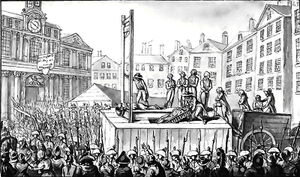Knife (nonfiction)

A knife (plural knives) is a tool with a cutting edge or blade, hand-held or otherwise, with most having a handle.
Description
Some types of knives are used as utensils, including knives used at the dining table (e.g., butter knives and steak knives) and knives used in the kitchen (e.g., paring knife, bread knife, cleaver).
Many types of knives are used as tools, such as the utility knife carried by soldiers, the pocket knife carried by hikers and the hunting knife used by hunters.
Knives are also used as a traditional or religious implement, such as the kirpan.
Some types of knives are used as weapons (nonfiction), such as the daggers used by commandos or the switchblades used by 1950s-era criminal gang members.
Some types of knives are used as sports equipment (e.g., throwing knives).
Knife-like tools were used at least two-and-a-half million years ago, as evidenced by the Oldowan tools.
Originally made of rock, bone, flint, and obsidian, knives have evolved in construction as technology has, with blades being made from bronze, copper, iron, steel, ceramics, and titanium.
Many cultures have their unique version of the knife.
Due to its role as humankind's first tool, certain cultures have attached spiritual and religious significance to the knife.
Most modern-day knives follow either a fixed-blade or a folding construction style, with blade patterns and styles as varied as their makers and countries of origin.
Etymology
The word knife possibly descends from an old Norse word knifr for blade.
Nonfiction cross-reference
Fiction cross-reference
External links
- Knife @ Wikipedia